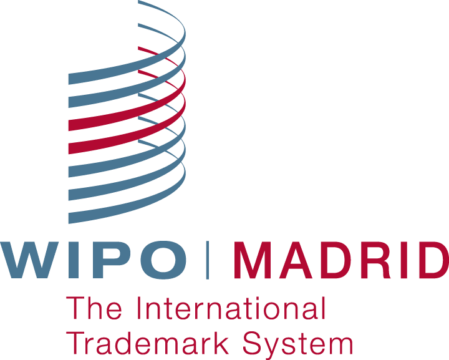Supreme Court Determines that, in Most Instances, Copyright Applications Must Proceed to Registration Before an Infringement Action May Be Filed

Takeaway: The Supreme Court has determined that a copyright application must proceed to registration before it can be asserted in a copyright infringement suit. File your copyright application early as it can take many months to issue before you can sue an infringer!
In the recent case of Fourth Estate Public Benefit Corp. v. Wallstreet.com, the Supreme Court of the United States determined the question of whether you may officially bring suit for copyright infringement before a copyright application has matured into registration. In Fourth Estate, Fourth Estate licensed articles that they had written to WallStreet.com. Subsequently, Wallstreet.com cancelled the license agreement that they had with Fourth Estate. However, Wallstreet.com never removed the articles that they had licensed from Fourth Estate from its website.
The Supreme Court has now settled a conflict that existed between Circuit Courts when some found that an application, as opposed to a registration, was sufficient to maintain a company cause of action.
Before filing suit, Fourth Estate filed copyrights over the articles that were at issue in this case. However, the Copyright Office had not yet acted on the copyright applications.
Fourth Estate argued that the copyright statute states that you may bring an infringement suit once “registration . . . has been made.” They argued that this phrase merely refers to the act of filing for registration with the Copyright Office. The Supreme Court disagreed with this interpretation holding that filing a copyright application alone is not sufficient to bring a lawsuit for copyright infringement.
The court reasoned that the phrase “registration . . . has been made” refers to the Copyright Office’s act of granting registration, not the copyright claimant’s request for registration. Therefore, although you own copyright in a creative work the instant you produce that work, you cannot enforce those rights until you have met the formal requirements and your application has proceeded to registration.
For this reason, as a business owner you should be diligent in filing copyright applications for your creative works. Otherwise, you may end up having to delay any legal action until the applications have actually proceeded to registration.
The Supreme Court Defines “Full Costs” Under Copyright Statute
Takeaway: “Full costs” under the copyright statute does not expand the definition of costs as defined by 28 U.S.C. §§ 1821 and 1920.
In the case of Rimini Street v. Oracle USA the Supreme Court of the United States has determined that “full costs” in the copyright statute does not expand the normal definition of costs. The court determined that “full costs” means only the costs as defined within the six categories of costs defined in 28 U.S.C. §§ 1821 and 1920. This decision was a reversal of the Ninth Circuit’s determination that the Copyright Act gives federal district courts discretion to award “full costs” to a party in copyright litigation.
This decision brings the definition of costs under the Copyright Act in line with hundreds of other federal statutes where costs such as expert witness fees, e-discovery expenses, and jury consultant fees are not included in an award of costs.
Changes in Trademark Law Due to Brexit
Takeaway: Takeaway: The United Kingdom will create trademark registrations based on current European Union Registered trademarks.

The United Kingdom (“UK”) has recently approved a policy where European Union (“EU”) trademarks will also become UK trademarks after Brexit occurs. The Trademarks will be transferred from the current EU trademark registration files and receive the same filing date as the original registration. These trademarks that are transferred will be called “comparable trademarks (EU).”
However, if a trademark is still pending on the day of Brexit in the EU, the owner of that application will have to refile the application in the UK. Fortunately for those who still have trademark applications pending in the EU, they will still be able to claim priority to the original filing date of the original EU application. Once Brexit occurs, those who have pending trademark applications in the EU will have nine months to file for UK national applications.
Image Credit: https://briefingsforbrexit.com/no-deal-is-no-nightmare-facts-about-eu-trade-after-brexit/
Another Reason to Register Your Trademark
Takeaway: It might be a good idea for businesses to register for federal trademarks and enroll in Amazon’s brand registry so they may participate in Amazon’s new anti-counterfeiting program.
This week, Amazon announced a program that allows trademark owners to takedown counterfeits. Amazon has named the program “Project Zero.” The program aims to eliminate counterfeit goods that are sold on Amazon.com by scanning for suspected counterfeits and removing the listings automatically. The system that Amazon has implemented is claimed to detect 100 times more counterfeits than Amazon was able to detect before.
This project is currently only in a limited capacity as only companies that have been invited to participate in the program may do so. In other words, Amazon is testing out the project with a limited number of businesses to make sure the program is working effectively. However, there is a waitlist for companies that would like to participate in the program. To participate, the businesses must have obtained federally registered trademarks and also must enroll in Amazon’s brand registry.
This may be another incentive for businesses to file for federal trademarks. This is largely because some business owners in the program have stated that participation has almost completely eliminated their counterfeiting problems.
Pros and Cons of Filing a Trademark with Madrid Protocol
Takeaway: Though you can use the Madrid Protocol to file one application and obtain trademark protection in multiple countries, there are some disadvantages to this process.

If you are planning to monetize your goods or services internationally, one of the best options to protect your brand is to file a trademark with the Madrid Protocol. Its primary benefits are cost and time savings. Initially, the cost is lower, as you will not need foreign associates to file. As well, when it is time to renew in 10 years, a single renewal is possible at lower cost than doing it country-by-country. If you decide to assign the rights to the mark, you can save money by recording one assignment rather than on a country-by-country basis.
While it seems like there are only benefits to filing with the Madrid Protocol, there are some disadvantages to this process. First, if there is any problem with the application in any country, then a foreign associate is needed in that country, and some of the cost advantage disappears. Some countries issue office actions on pending U.S. applications, setting a response date and requiring submission of the U.S. registration. This may decrease the cost advantage in that it may require use of an associate. We recommend use of Madrid Protocol only from issued U.S. registrations on the principal register, and preferably those that are incontestable. Secondly, the registrations have to be owned by an entity in a country that is a member of the Madrid Protocol. As a U.S. company, all rights hinge on the U.S. registration. If that is lost, then all of the foreign registrations are lost. Further, in individual country filings, the description of the goods/services can be broader in foreign countries than is possible in the U.S. In Madrid, we are limited to what is in the U.S. registration. Further, the registrations cannot be sold to an entity whose home country is not a member of the Madrid Protocol. Lastly, if there are issues with the application and no foreign associate is assigned, the central authority (WIPO) is slow in providing notice.
While the Madrid Protocol process may seem like an obvious economic choice, the advantages of this trademark filing are not without its disadvantages. It is important to take these disadvantageous possibilities into account when aiming to protect your brand internationally.
Image Credit: https://revisionlegal.com/trademark-law/international-trademark-filing/
Cislo & Thomas LLP Spotlight
 Lisa Gazley Featured in Vanguard Magazine
Lisa Gazley Featured in Vanguard Magazine
Congratulations to former Cislo & Thomas employee Lisa Gazley for being featured this month in Vanguard Magazine!
Lisa is the current director of legal affairs for 20th Century Fox. The intellectual property knowledge she gained at Cislo & Thomas surely helped her earn this envious job title.
We are proud of you, Lisa!



